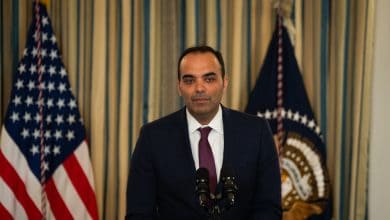Campus Protests Over Gaza Spotlight the Work of Student Journalists

Their updates come in harried bursts. Real-time narrations of the scene at Columbia University’s protest encampment in Manhattan, interspersed with the calmer voice of a host in the studio, directing live on air the dozen or so student journalists covering the moment police officers in riot gear moved in to clear an occupied university building Tuesday night.
“Do we have a field reporter over on Amsterdam? We have word that arrests are happening on Amsterdam, if we could get a field reporter over there.”
“Sorry, Sarah, do you need to go?”
“It’s getting really hard for us to report from this vantage.”
The stream from the Columbia University student-run radio station, WKCR, was so popular that night that its website crashed. As pro-Palestinian demonstrators seized Hamilton Hall, theirs was one of the most extensive broadcasts from the scene because the school had limited access for professional journalists.
The same is true around the country, where student journalists have provided some of the most detailed and riveting coverage of the protests that have engulfed campuses. The Brown Daily Herald reported on negotiations between the school’s trustee board and the protesters there. The University of Southern California’s paper, The Daily Trojan, Dartmouth College’s The Dartmouth and the University of North Carolina’s Daily Tar Heel have provided minute-by-minute live coverage on X, Instagram and on their websites.
The journalists’ efforts have drawn rare praise from the Pulitzer Prize Board, which highlighted in a statement the “extraordinary real-time reporting of student journalists at Columbia University” and around the country, who reported “under difficult and dangerous circumstances and at risk of arrest.”




